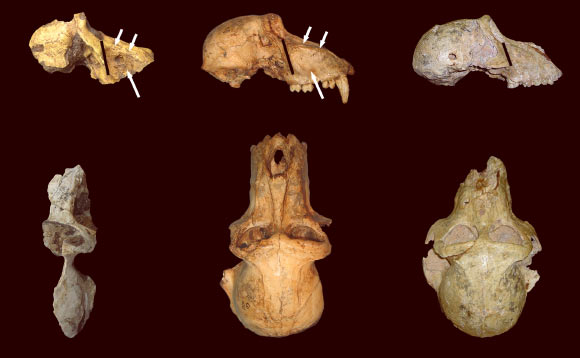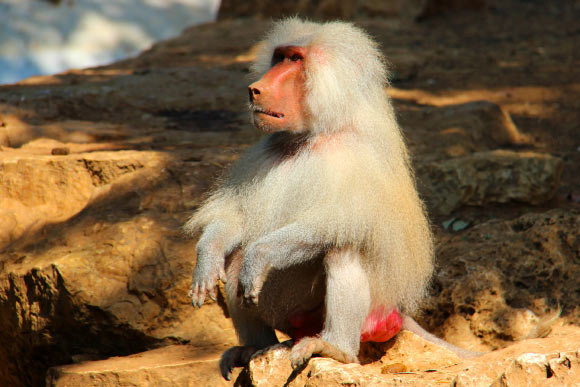A two-million-year-old partial skull of the extinct baboon Papio angusticeps has been unearthed at Malapa, in the Cradle of Humankind World Heritage Site, by a team of scientists headed by Dr Christopher Gilbert of Hunter College of the City University of New York. The specimen, according to the team, represents both the earliest baboon ever found and the only non-hominin primate yet recovered from Malapa.
Modern baboons are typically divided into a number of populations recognized as either species or subspecies spread all throughout sub-Saharan Africa and into the Arabian Peninsula.
Despite their evolutionary success, modern baboon origins in the fossil record have not well-understood or agreed upon.
“According to molecular clock studies, baboons are estimated to have diverged from their closest relatives by 1.8 to 2.2 million years ago; however, until now, most fossil specimens known within this time range have been either too fragmentary to be definitive or too primitive to be confirmed as members of the living species Papio hamadryas,” said Dr Gilbert, who is the first author on the study published in the journal PLoS ONE.
The new specimen of Papio angusticeps – found during excavations for an early human ancestor known as Australopithecus sediba – helps to confirm the suggestion of previous researchers that Papio angusticeps may, in fact, be an early population of Papio hamadryas.
“If you placed a number of Papio angusticeps specimens into a modern osteology collection, I don’t think you’d be able pick them out as any different from those of modern baboons from East and South Africa,” Dr Gilbert said.

Comparison of morphology in the Malapa specimen (left), Papio angusticeps (center), and Papio izodi (right). Image credit: Gilbert CC et al.
Furthermore, the estimated age of the specimen, 2.026 – 2.36 million years, is in almost perfect agreement with molecular clock analyses for the initial appearance of modern baboons.
Thus, the specimen may help to solve the evolutionary origins of these highly successful animals and confirm the estimates of molecular studies.
In addition, because monkeys are widely recognized as key time-sensitive elements in the fossil record, the fact that the Malapa Papio angusticeps specimen is well-dated allows future studies to better estimate the age of fossil sites where the species is found.
South African early hominin sites, in particular, may be able to achieve more accurate age estimates on the basis of these new findings.
_____
Gilbert CC et al. 2015. Papio Cranium from the Hominin-Bearing Site of Malapa: Implications for the Evolution of Modern Baboon Cranial Morphology and South African Plio-Pleistocene Biochronology. PLoS ONE 10 (8): e0133361; doi: 10.1371/journal.pone.0133361








